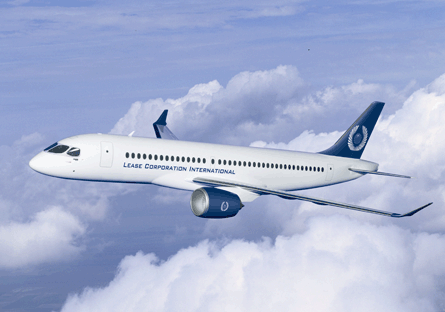Montreal, Canada-based simulator manufacturer CAE is working with Bombardier to produce the first full flight simulator for the CSeries next-generation single-aisle twinjet. But Bombardier is also going to employ CAE's skills in systems integration and simulation well before a Pratt & Whitney PW1500G-powered testbed aircraft needs to train pilots to fly it for real.
The skills CAE will deploy in support of the CSeries represent an extension of its traditional range of engineering services, says Jeff Roberts, CAE's group president civil simulation products, enabling the company to offer design and test support during the development phase of any new aircraft.
CAE's contribution will become more transparent once Bombardier builds its first CSeries testing and training facility in Montreal. The building, called the "complete integrated aircraft system test area", or CIASTA, will be erected in advance of a separate assembly facility at the Montreal site.
 |
|---|
© Bombardier |
CIASTA will include the CSeries integrated systems test certification rig. This will be a "systems complete static aircraft", says Bombardier, "and we will declare this to be aircraft number one".
"All of the flight control systems, avionics, electrical and environmental controls will be tested one year in advance of the actual flight-test programme. It will complete 2,000 flight cycles before first flight.
CAE is launching a new suite of products and services, to be known as the CAE Augmented Engineering Environment (CAEE) as part of the CIASTA programme. The CAEE will include a modelling and simulation environment that will allow original equipment manufacturers to evaluate, test and validate a range of aircraft models and systems during the development phase.
Work on the programme will start immediately, says CAE, and delivery of the CAEE to support the CSeries CIASTA will take place in 2011. The prototype CSeries full flight simulator and Simfinity training devices for initial pilot and engineer training will be in place early in 2013 to support the aircraft's service entry later that year.
Bombardier feels strongly it will meet its targeted service entry for the CSeries. "We're well on our way [and] we intend to be on time," says CSeries commercial aircraft president Gary Scott, citing the 63-month development cycle for the programme, the firm's longest ever.
The company reports that it has reached the joint definition phase of the CSeries programme.
The first CSeries composite aft fuselage demonstrator is advancing at Bombardier's Saint Laurent facility near Montreal, while the first centre fuselage barrel, being developed by China's Shenyang Aircraft, is scheduled to be shipped to Montreal in August.
Bombardier's Belfast facility in Northern Ireland is responsible for producing the CSeries composite wing, and it has begun assembly of its first demonstrator.
Installation of the upper skin panel has been completed and the lower skin panel will be added within weeks. The Belfast site is also preparing to break ground later this summer on a multi-million dollar wing assembly facility.
Meanwhile, Bombardier has revealed contracts with a 17 additional suppliers for the CSeries.
One of the most significant awards, for development and manufacture of the CSeries wheels, electro-mechanically actuated carbon brakes and brake control system, has been assigned to Meggitt Aircraft Braking Systems, which tested the braking technology last October on a Global 5000.
Having secured a total 100 CSeries commitments from Lufthansa for its Swiss International Air Lines unit and Irish lessor LCI, and with "more than 150 potential customers showing strong interest" in the CSeries family, Bombardier has "no intention of turning back", says Bombardier new commercial aircraft programme director Ben Boehm.
Source: Flight International



















